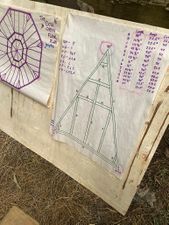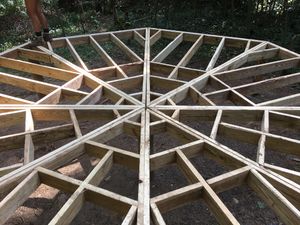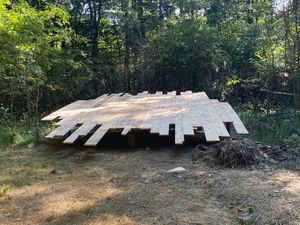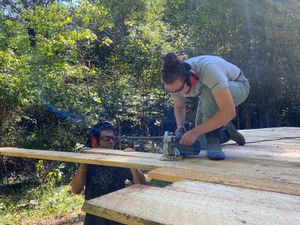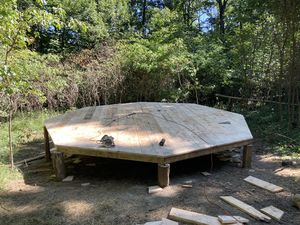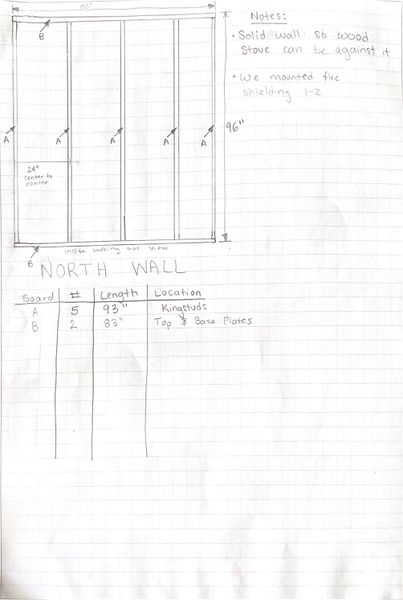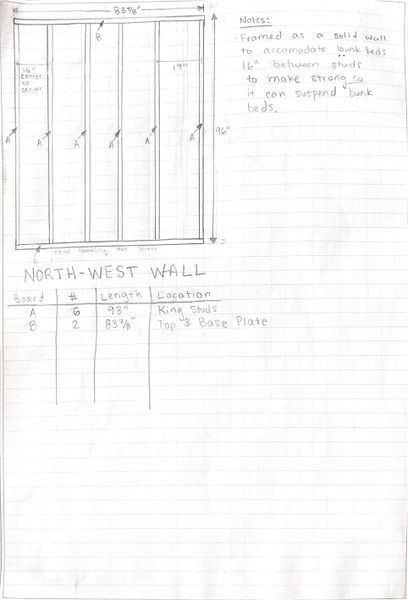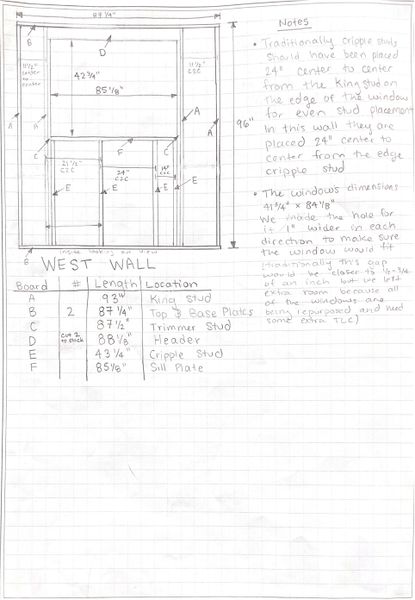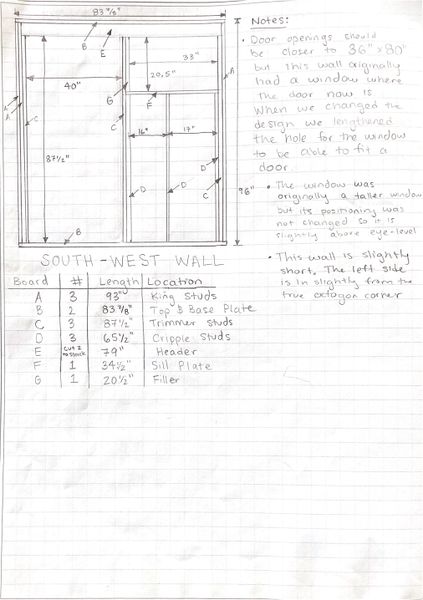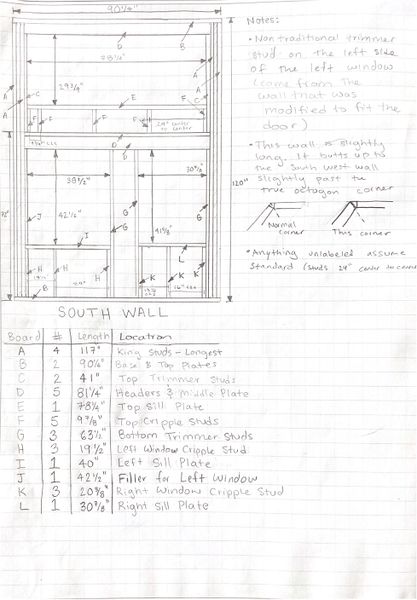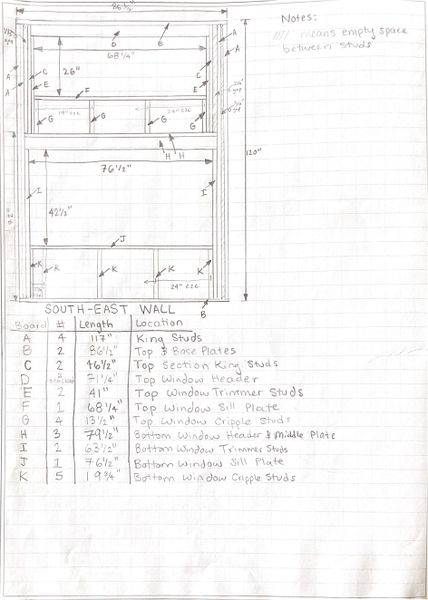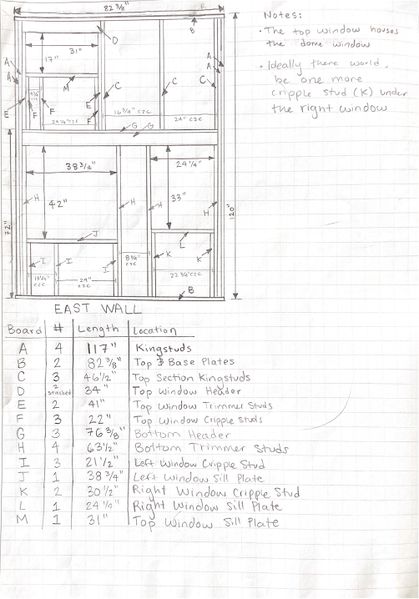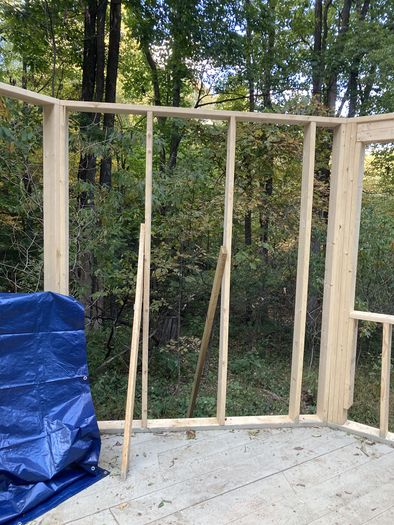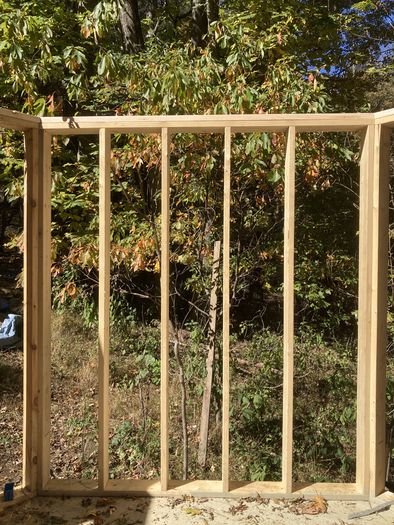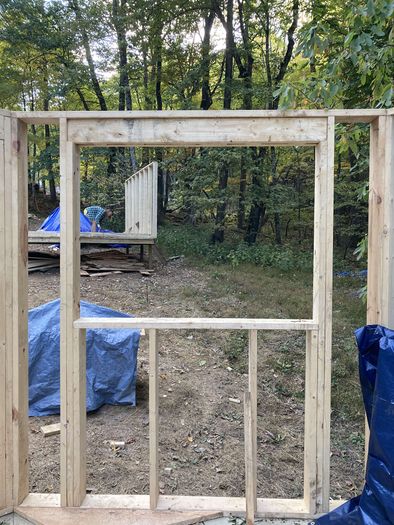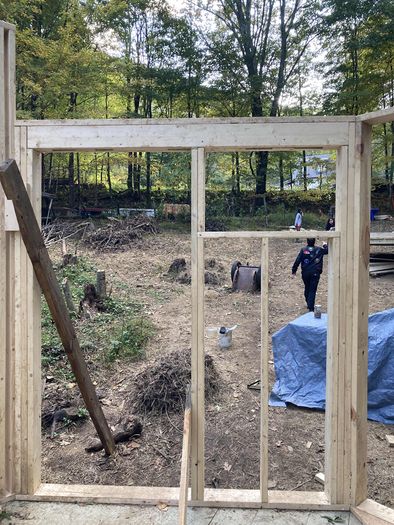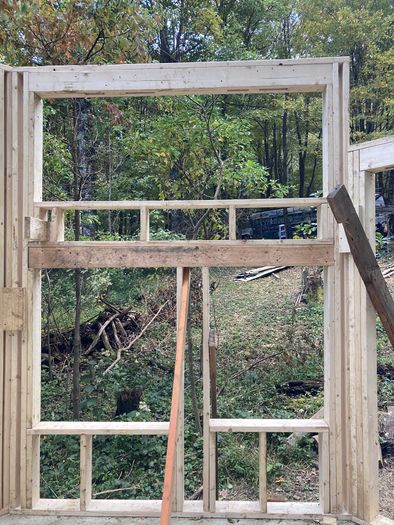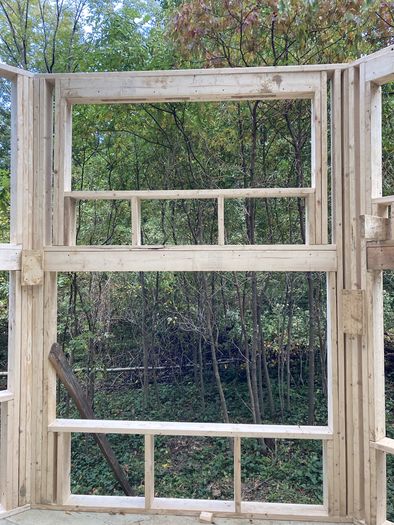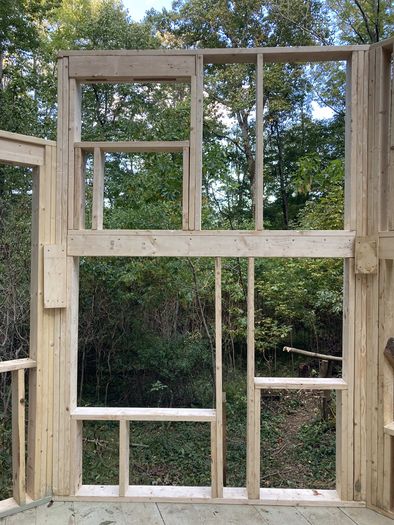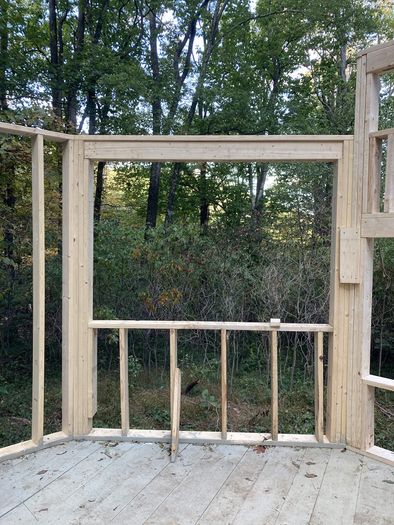Octagon Documentation
Insert lots of pictures
Contents
Foundation
The octagon cabin rests on nine main posts and two extra for the bump out. The posts are mainly locust trees that were felled on the land. The center post is a power line post taken down from when Lisa and Elizabeth went off-grid. The post holes were dug to go below the frost line so that they wouldn't rise out of the ground when it freezes during the winter. The posts were then debarked and put in the ground. To make them stable we tamped dirt and rocks into the hole slowly with sticks.
Flooring
The octagon floor is made of eight triangles. Because our posts didn't quite end up in the right place, each triangle is slightly different, but all follow the same general shape. To make them, we cut 2x6 boards using a chop saw powered by our generator, but some cuts had too sharp of an angle, so we cut them by hand. Above the triangles is a sub-floor made of locally cut and processed wood. We nailed parallel subflooring boards to the floor joists, making sure to overlap the ends of boards over joists, and then trimmed each board by cutting around the perimeter of the octagon with a circular saw. We left 1 1/2 inches of overhang to cover an additional band of 2x6s that will eventually reinforce the screws that hold together the triangles together. We discovered live worms in the subflooring boards so we covered them in deck stain to kill the worms and protect the wood.
Wall Frames
When we designed the wall frames, we started by inventorying the windows we had and figuring out where they would work best to maximize southern sunlight. Beyond that, we followed rules about headers and stud placement. To make the wall frames, we cut 2x6 boards on the chop saw and assembled them with screws.
Insulation
The octagon insulation is made up of sections of light straw clay and bottle walls. Both required a multi-step process. For the light straw clay, we sifted clay harvested on the land, mixed it with water to make a clay slip, then tossed it with local straw and packed it into the walls. We tried stomping at first, then pushed it in with our hands, then started just pushing the edges of each section down with sticks to keep the center less packed. For every two feet we went up we put in a piece of wire to give it support. For the bottle walls we cut four inches off the bottom of wine bottles and then taped two pieces together to make an 8-inch long section to put into the 5.5-inch thick walls. [insert rest of bottle wall process]
Roofing
[insert roofing stuff here]
Loft Construction
Future Steps
As of 12/16/2021 the octagon was Tyvecked to be waterproofed for the winter. In the spring or future, the octagon will need plaster on the walls to protect the light straw clay insulation. One window still needs to be framed and installed in the top of the South-East wall. It would be good to add some kind of waterproofing or filler between the ridge cap and the roofing to prevent water from being blown upward and leaking through the ridgeline of the roof. Additionally, 2x6s need to be added to the outside of the floor joist triangles and flashing needs to be added to the bottom of the walls.
